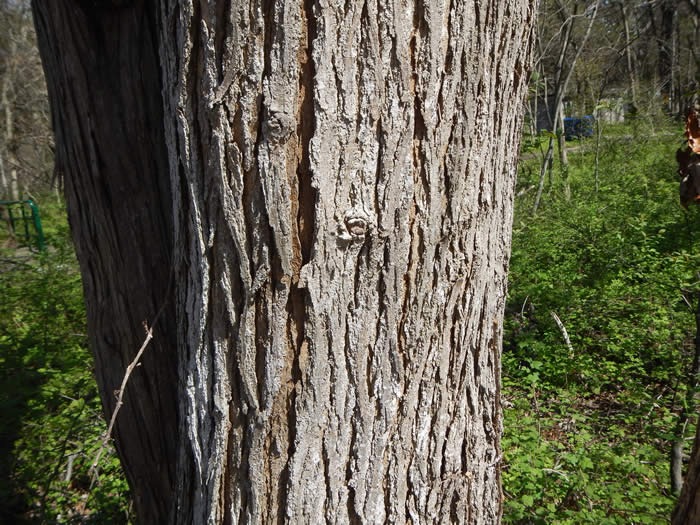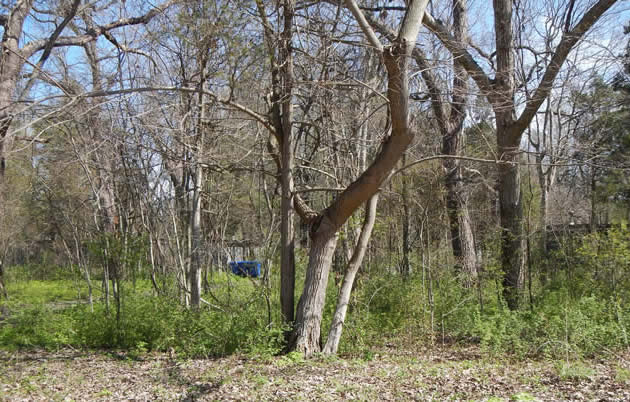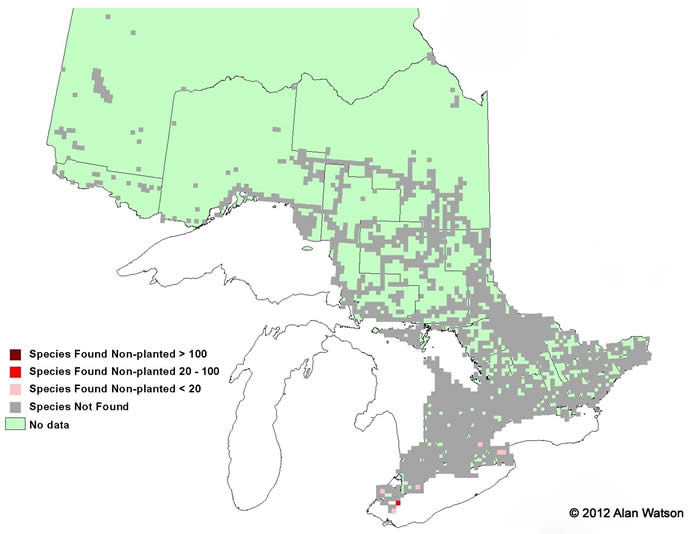Red Mulberry - Morus rubra
Red Mulberry is Canada’s only native mulberry species, and is threatened in Ontario. Unfortunately, Red Mulberry is often out-competed by the non-native White Mulberry, and also easily hybridizes with its relative, causing a loss of genetic purity in the native species. More information about The Arboretum's work on red mulberry can be found on our red mulberry conservation page.
Red Mulberry fruit is delicious and edible to humans when ripe, and is quickly eaten by birds and small mammals in the summer. These trees do make nice ornamental trees that attract many bird species, but they require a lot of space, and their fruit can be a little messy!
The leaves of the Red Mulberry are large, alternately-arranged along the twigs and typically quite dull and rough on the leaf surface. The similar White Mulberry (Morus alba), an invasive species in Ontario, has leaves that are usually more heavily-lobed and with a shiny and smooth leaf surface. These two species frequently hybridize, and intermediates can be difficult to positively identify without genetic verification. Photo by Sean Fox.

Red Mulberry bark is reddish-brown and can be separated into flaky strips. Photo by Chris Earley.

Red mulberry has large, spreading and drooping branches that require a lot of space. The trunk of the Red Mulberry is short and quickly divides into the aforementioned spreading branches. It can also grow up to 20 m high and 75 cm in diameter. Photo by Chris Earley.
The fruits of the Red Mulberry are a dark red-purple-black when mature, and are comparatively longer than those of the White Mulberry. Photo by Sean Fox.

Ontario Tree Atlas map of non-planted Red Mulberry. 1995-1999.
References
Farrar, J.L.. 1995. Trees in Canada. Fitzhenry & Whiteside Ltd. Toronto. ON. 504 pp.
Kershaw, L. 2001. Trees in Ontario: Including tall shrubs. Lone Pine Publishing. Edmonton. AB. 240 pp
Muma, W. 2011. Ontario Trees and Shrubs. [Online] Available: www.ontariotrees.com
OMNR, 2011. Ontario Ministry of Natural Resources: Ontario Tree Atlas. [Online] Available: http://www.mnr.gov.on.ca/en/Business/ClimateChange/2ColumnSubPage/267027.html
OMNR, 2008. Ontario’s Biodiversity: Species at Risk.